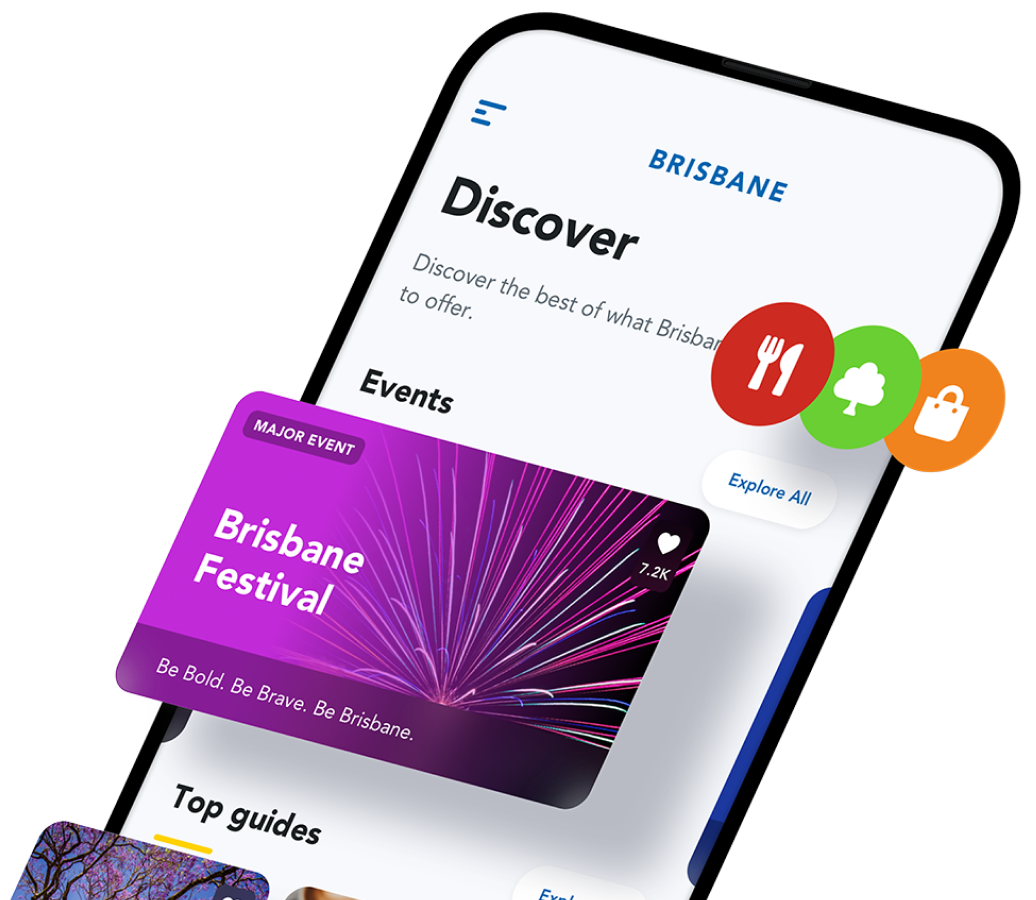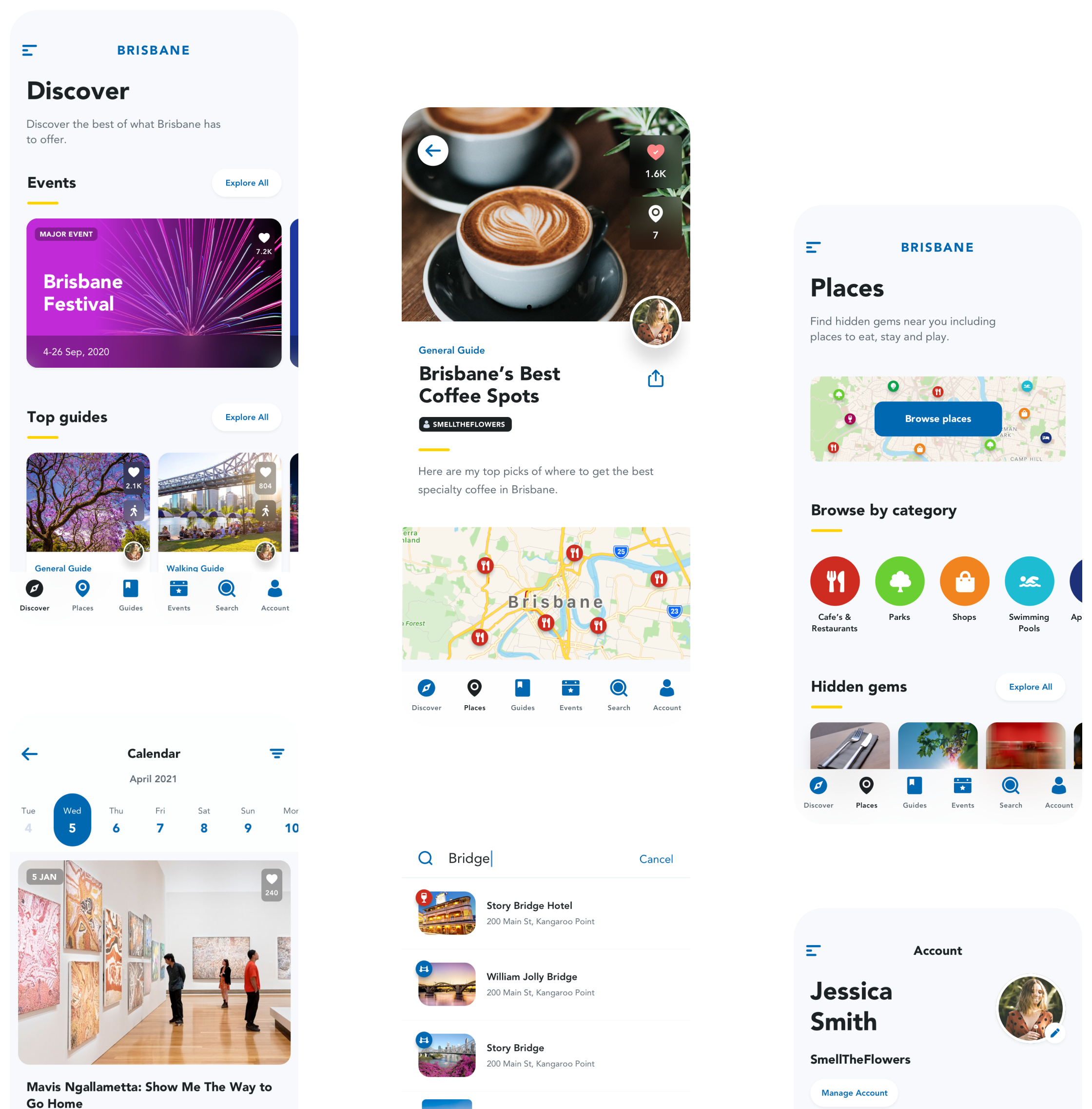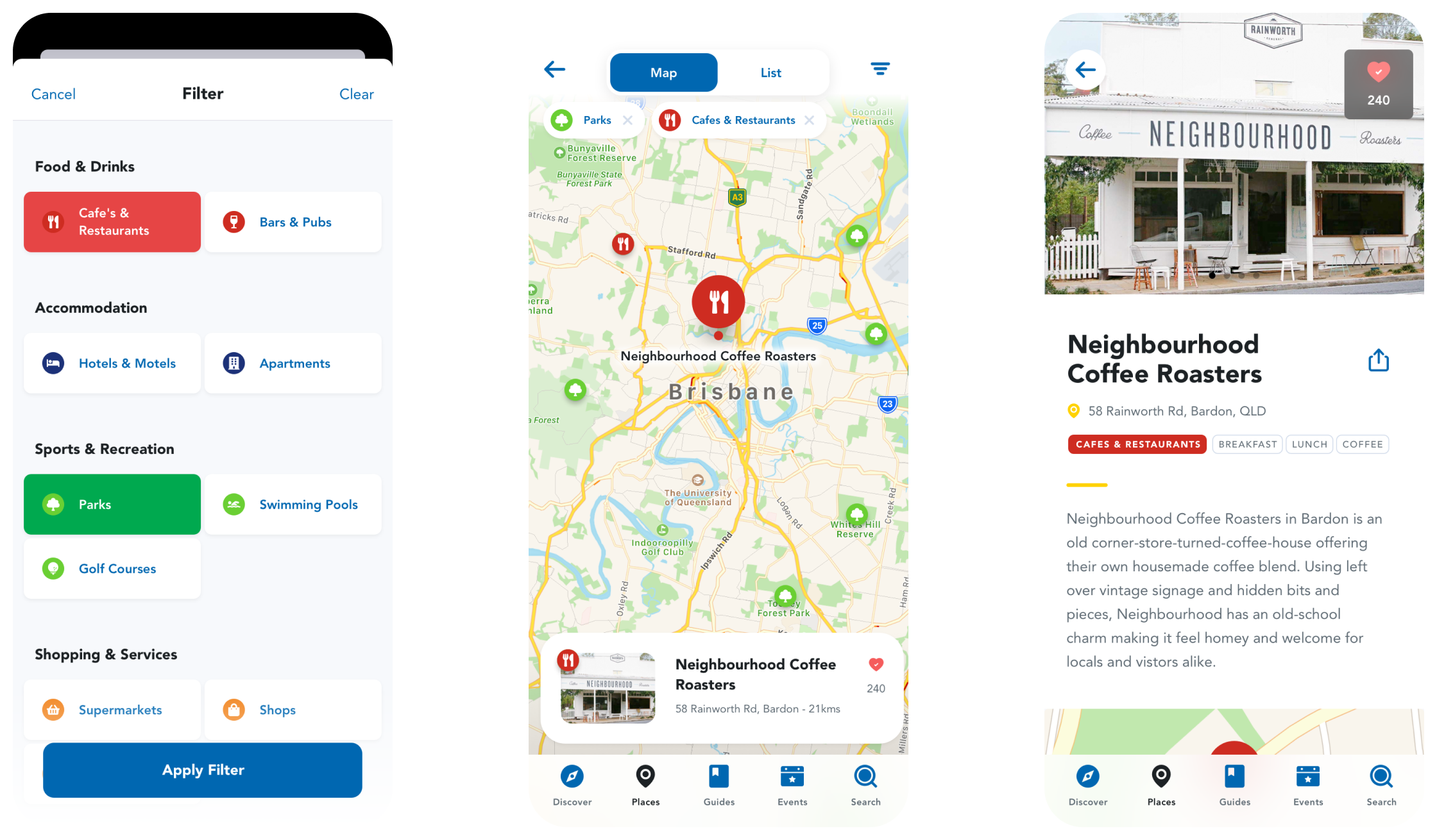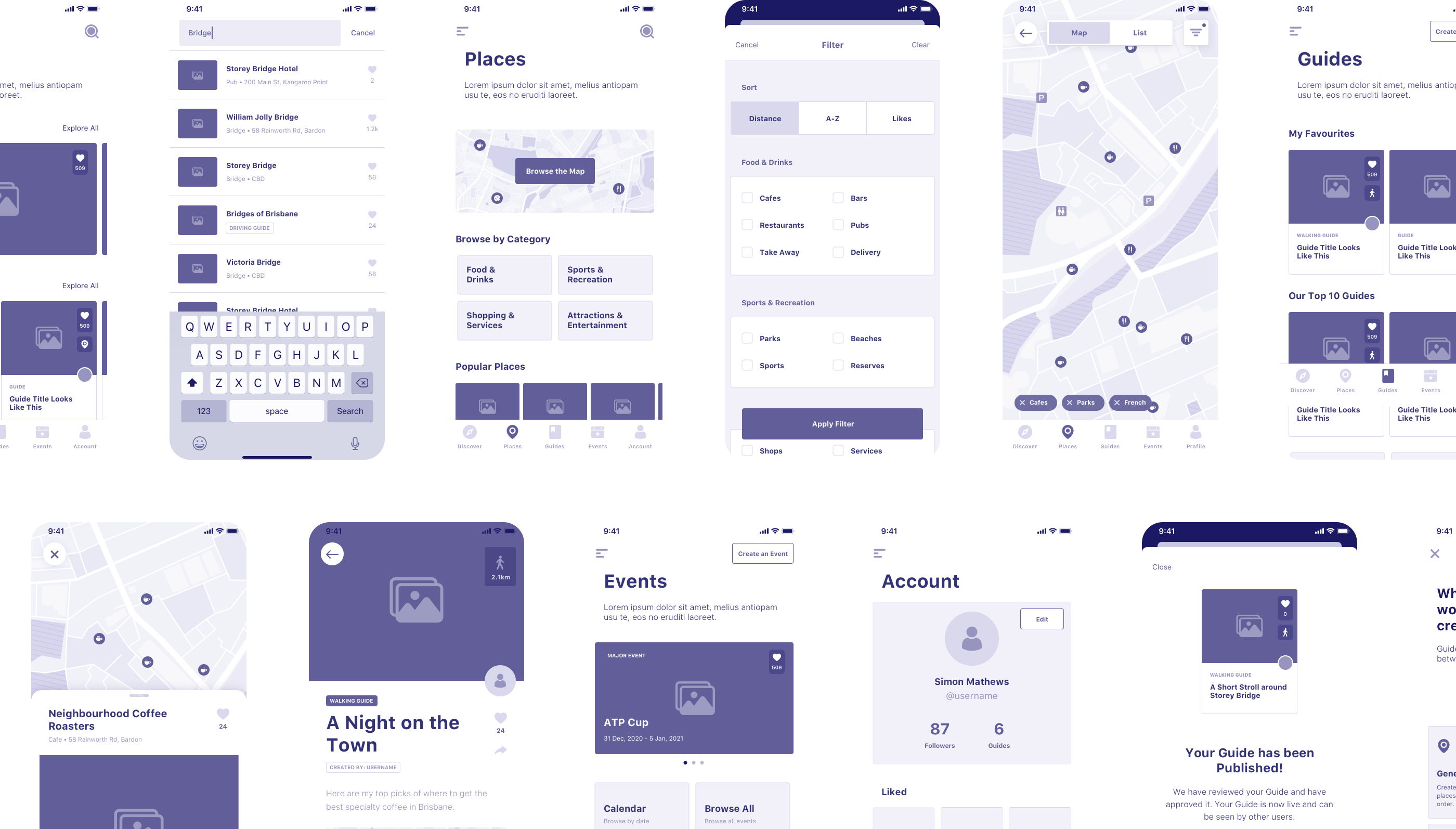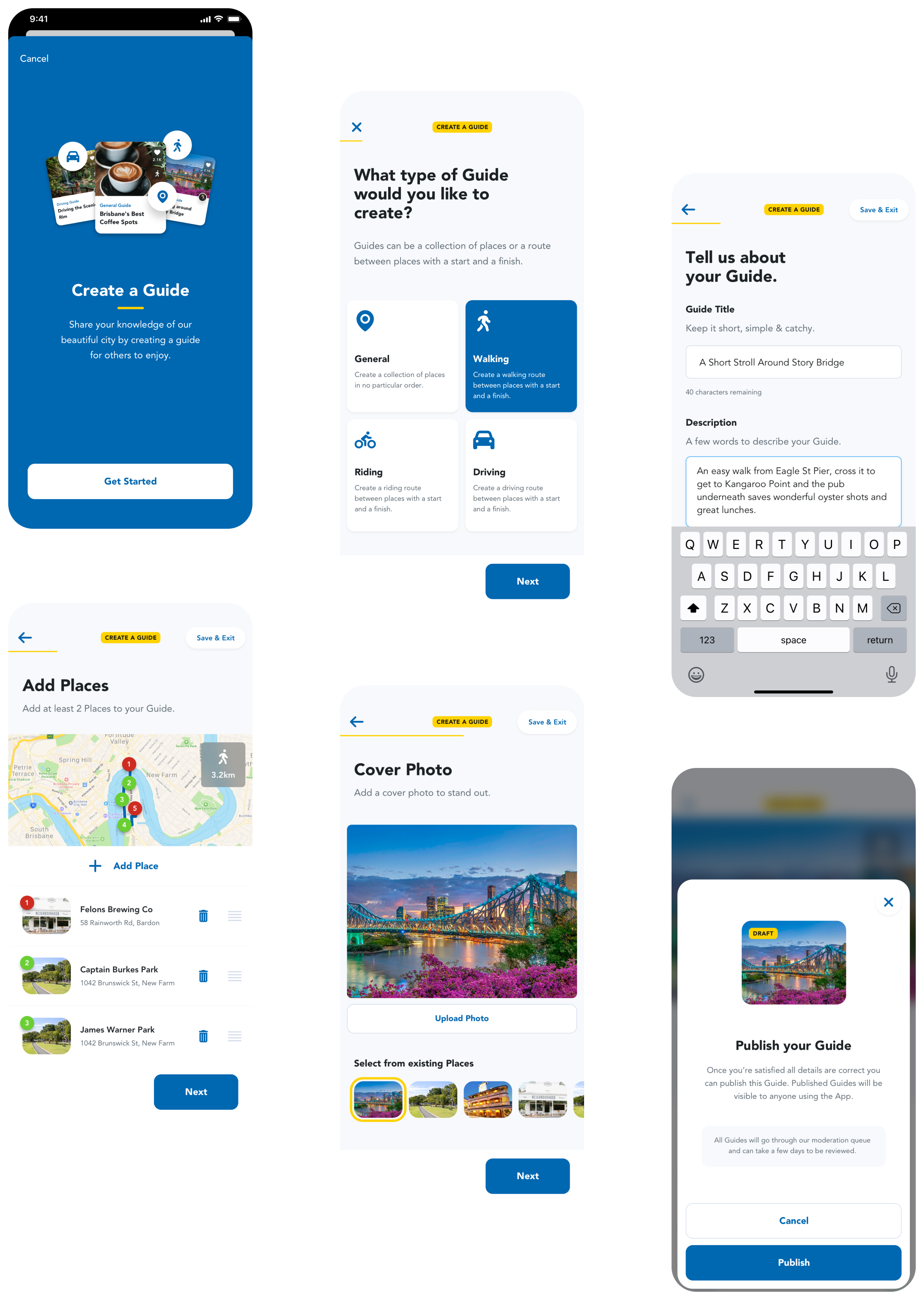The Brisbane App is designed to be used by a very wide range of users - essentially any resident or visitor
throughout the entire city. There is no target demographic or minimum expected level of technical savvy. Ensuring
a smooth, intuitive, user experience was recognised as a key factor in the overall success of the project.
Getting that user experience right was a substantial challenge. The app needed to support casual, anonymous users,
who perhaps install the app and use it on an ad hoc basis to find events or places near their own location. But at
the same time, the app provides a much deeper experience for business owners and guide creators.
The set of requirements for guide creators, in particular, were subtle and involved; yet if these tools were too
complex or confusing to use, we would miss out on that critical mass of content creators.
The design process for the Brisbane App took months, and covered an extensive initial wireframing phase, full
designs, and iteration of those designs through a series of informal and formalised usability testing.
Finally, the app was also built to meet accessibility guidelines from the beginning. Substantial effort was put
into meeting AA accessibility guidelines, including an audit by accessibility specialists at the Centre for
Inclusive Design.
